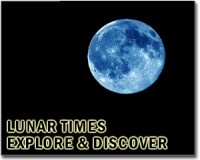|
 Caltech Team Finds Evidence Of Water In Moon Minerals
Caltech Team Finds Evidence Of Water In Moon MineralsPasadena CA (SPX) Jul 23, 2010 That dry, dusty moon overhead? Seems it isn't quite as dry as it's long been thought to be. Although you won't find oceans, lakes, or even a shallow puddle on its surface, a team of geologists at the California Institute of Technology (Caltech), working with colleagues at the University of Tennessee, has found structurally bound hydroxyl groups (i.e., water) in a mineral in a lunar rock returned to Earth by the Apollo program. Their findings are detailed in this week's issue of the journal Nature. ... read more |
. |
|
|
Free Space, Earth, Energy And Military Newsletters - Delivered Daily |
| . | . |
| .. |
'Sample return' space missions examined Washington (UPI) Jul 21, 2010
Washington (UPI) Jul 21, 2010 Space missions meant to return cosmic samples to Earth are expensive, more complicated and riskier than regular robotic missions, but worth it, scientists say. Recent sample-return missions, like the Japanese Hayabusa asteroid probe that attempted to gather billion-year-old rock from an asteroid's surface, have proven their usefulness, SPACE.com reported Tuesday. "With a sample-r ... more Astronomers Find A 300 Solar Mass Star  Sheffield, UK (SPX) Jul 22, 2010
Sheffield, UK (SPX) Jul 22, 2010Using a combination of instruments on ESO's Very Large Telescope, a UK-led international team of astronomers have discovered the most massive stars to date, one which at birth had more than 300 times the mass of the Sun, twice as much as the currently accepted limit. The existence of these monsters - millions of times more luminous than the Sun, losing mass through very powerful winds - ma ... more Scientist: SETI should switch 'channels'  Irvine, Calif. (UPI) Jul 21, 2010
Irvine, Calif. (UPI) Jul 21, 2010 The SETI Institute, listening to the cosmos for signs of signals from alien civilizations, may be monitoring the wrong "channels," a U.S. astrophysicist says. Gregory Benford of the University of California, Irvine, says such a civilization wanting to announce it presence would transmit "cost-optimized" narrowly focused signals, not the continuous omni-directional signals the SETI progr ... more |
.. |
 Two charged with stealing Neil Armstrong customs form  Scientists debate meaning of moon 'holes'  Instant online solar energy quotes Solar Energy Solutions from ABC Solar |
.. |
|
|
Free Space, Earth, Energy And Military Newsletters - Delivered Daily |
|
|
. |
 Australian laser system to track space junk
Australian laser system to track space junkSydney (AFP) July 20, 2010 An Australian company Tuesday said it had developed a laser tracking system that will stop chunks of space debris colliding with spacecraft and satellites in the Earth's orbit. Electric Optic Systems said lasers fired from the ground would locate and track debris as small as 10 centimetres (four inches) across, protecting astronauts and satellites. "We can track them to very high precision so that we can predict whether there are going to be collisions with other objects or not," Craig Smith, th ... read more |
| The contents herein, unless otherwise known to be public domain, are Copyright 1995-2010 - SpaceDaily. AFP and UPI Wire Stories are copyright Agence France-Presse and United Press International. ESA Portal Reports are copyright European Space Agency. All NASA sourced material is public domain. Additional copyrights may apply in whole or part to other bona fide parties. Advertising does not imply endorsement, agreement or approval of any opinions, statements or information provided by SpaceDaily on any web page published or hosted by SpaceDaily. Privacy statement |
| Previous Issues | Jul 22 | Jul 21 | Jul 20 | Jul 19 | Jul 16 |